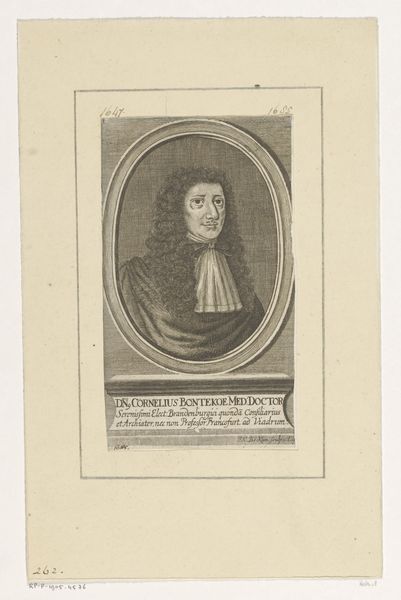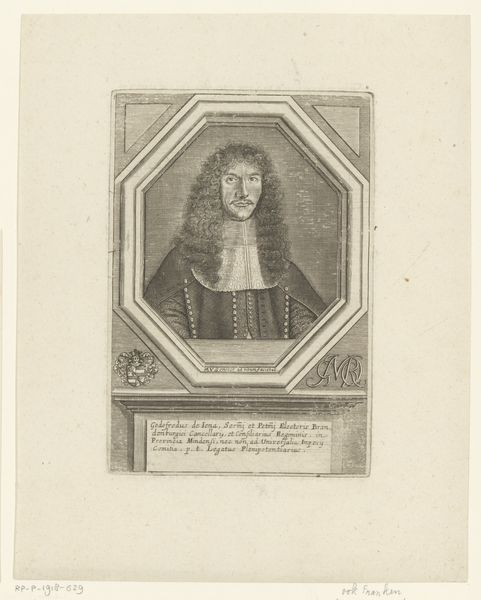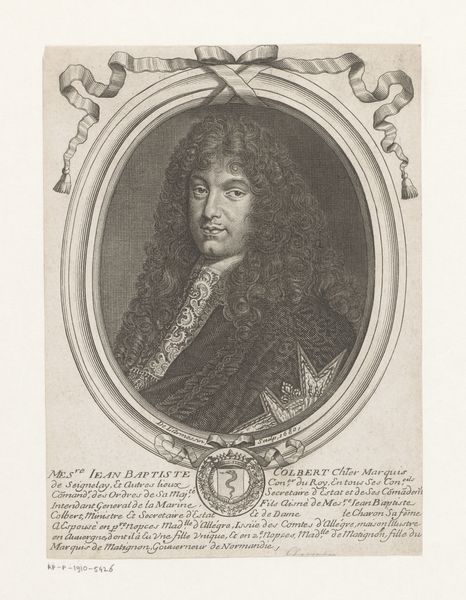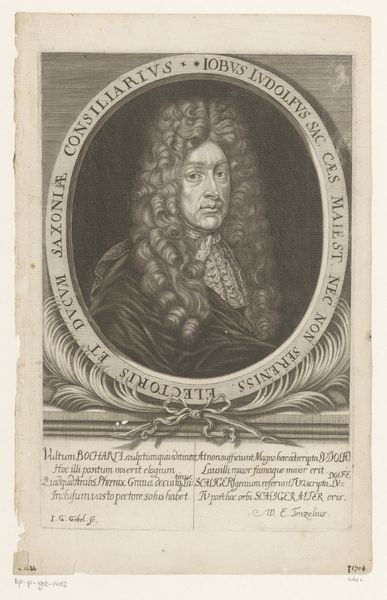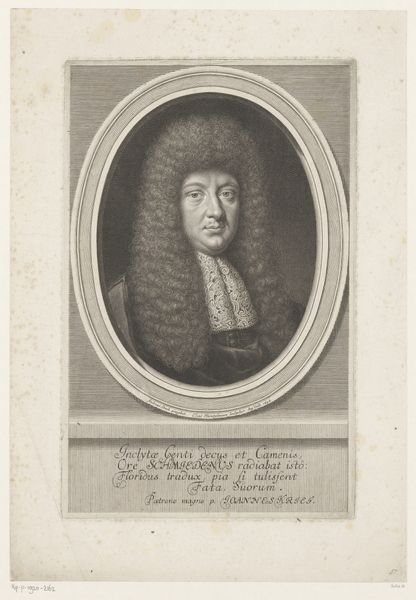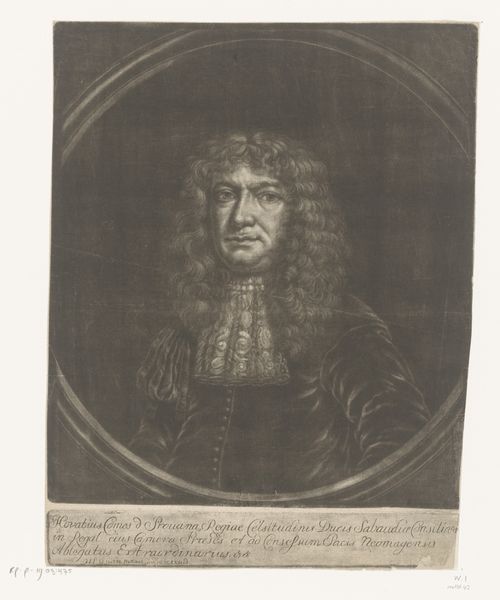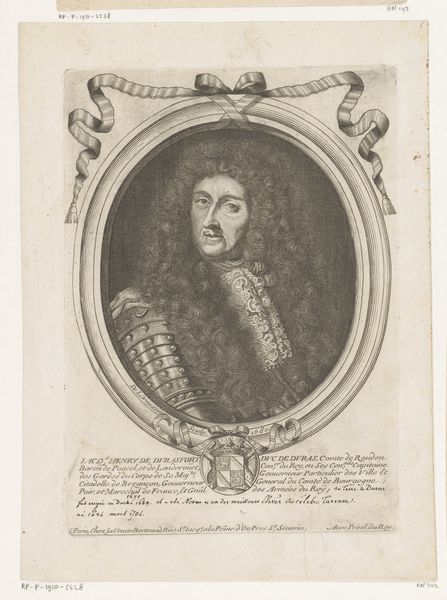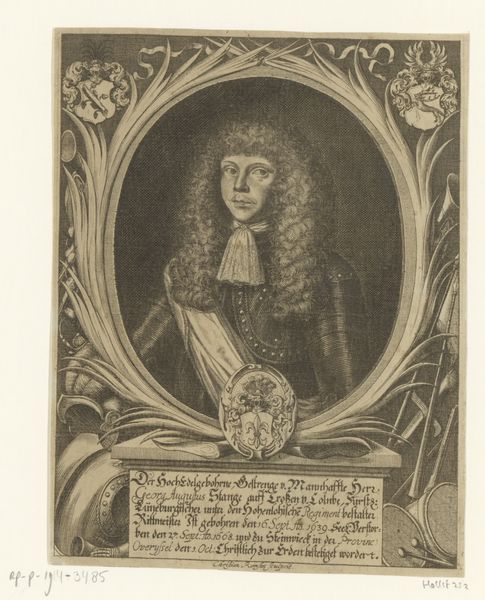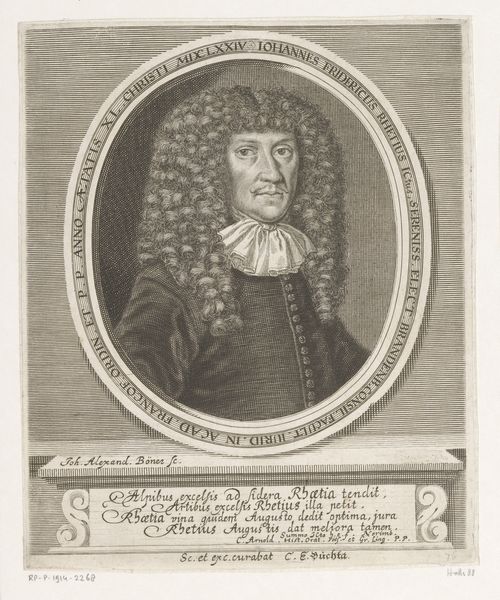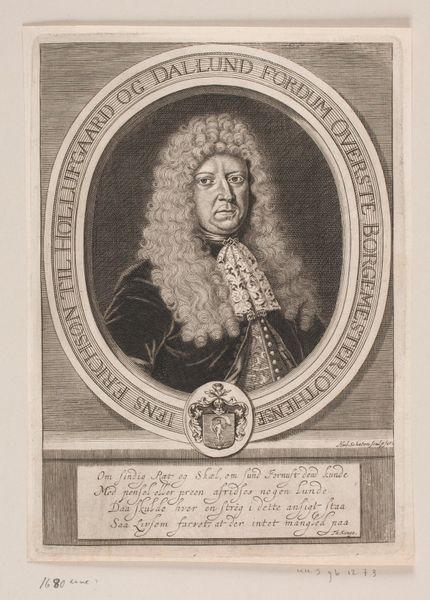
engraving
#
portrait
#
baroque
#
history-painting
#
academic-art
#
engraving
#
realism
Dimensions: height 206 mm, width 157 mm
Copyright: Rijks Museum: Open Domain
Curator: Take a moment with me to consider this striking engraving, "Portret van Werner Theodor Martini," crafted sometime between 1685 and 1721 by the artist Christian Romstet. Editor: Oh, that’s quite the imposing wig! Makes you wonder what secrets are hiding beneath all that hair, doesn’t it? Is it me, or does the portrait radiate a serious kind of intensity, like a Baroque-era ID photo? Curator: Indeed. Note how the meticulous engraving captures light, reflecting off the high-collared coat and illuminating his distinguished, yet somewhat stern, expression. The use of a circular frame further focuses our gaze. We are dealing with a portrait firmly entrenched in the Baroque and Realist traditions. Editor: You know, beyond the style, what strikes me is how this artwork offers us an encounter with somebody from centuries ago. Do you think Herr Martini had any clue his face, meticulously etched on a copper plate, would someday prompt chattering about wigs and gravitas? Curator: Precisely! These prints allow us to delve into history, providing direct contact with faces and personages of times past. It’s quite an honor, considering we still debate whether a smudge or a wrinkle indicates more on Martini's life trajectory. Editor: Right! Now, tell me a bit about how such details as the heraldic device and the inscriptions play their part in situating Martini within a socio-historical frame. Curator: The detailed inscriptions at the bottom of the portrait highlight his role within both juridical and academic life in Saxony. A formal announcement intended to broadcast not merely his physical semblance, but a compendium of achievements and public recognitions to contemporaries and posterity alike. Editor: Thinking about this, if this portrait could suddenly whisper, I wonder what stories of law, academia, and personal hopes it would impart. Curator: An enriching question to consider on this side of time. As we conclude, pondering that mystery allows us to go from a work admired for its graphic clarity to becoming the opening act in a larger narrative engagement. Editor: Agreed. What began as an evaluation of artistry became an act of reflection!
Comments
No comments
Be the first to comment and join the conversation on the ultimate creative platform.
